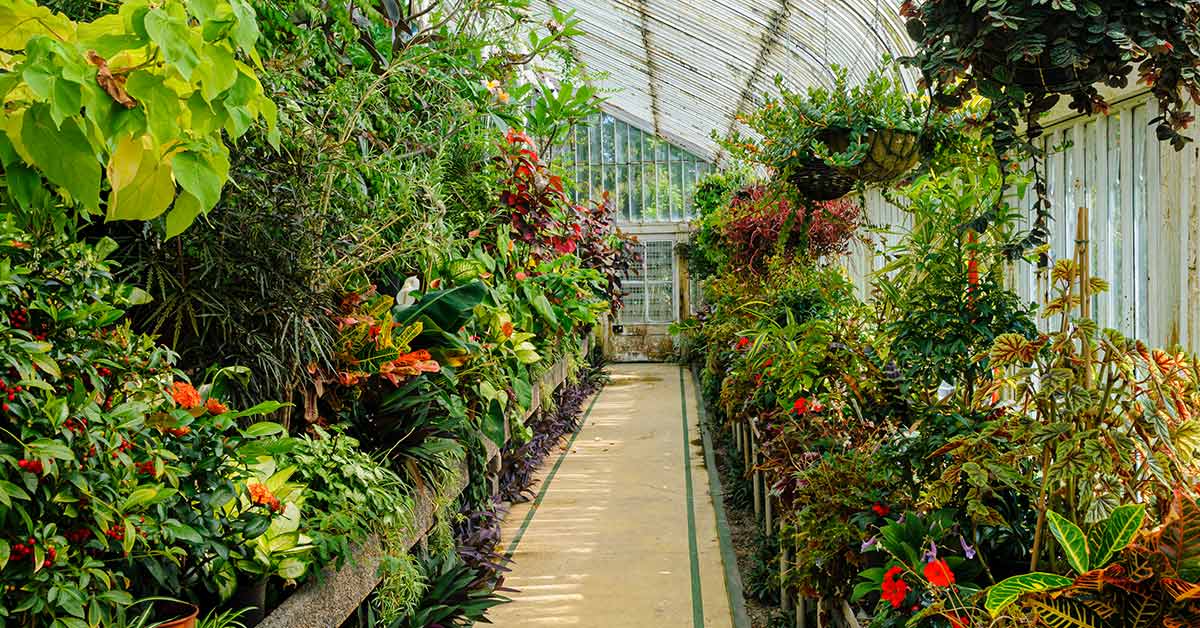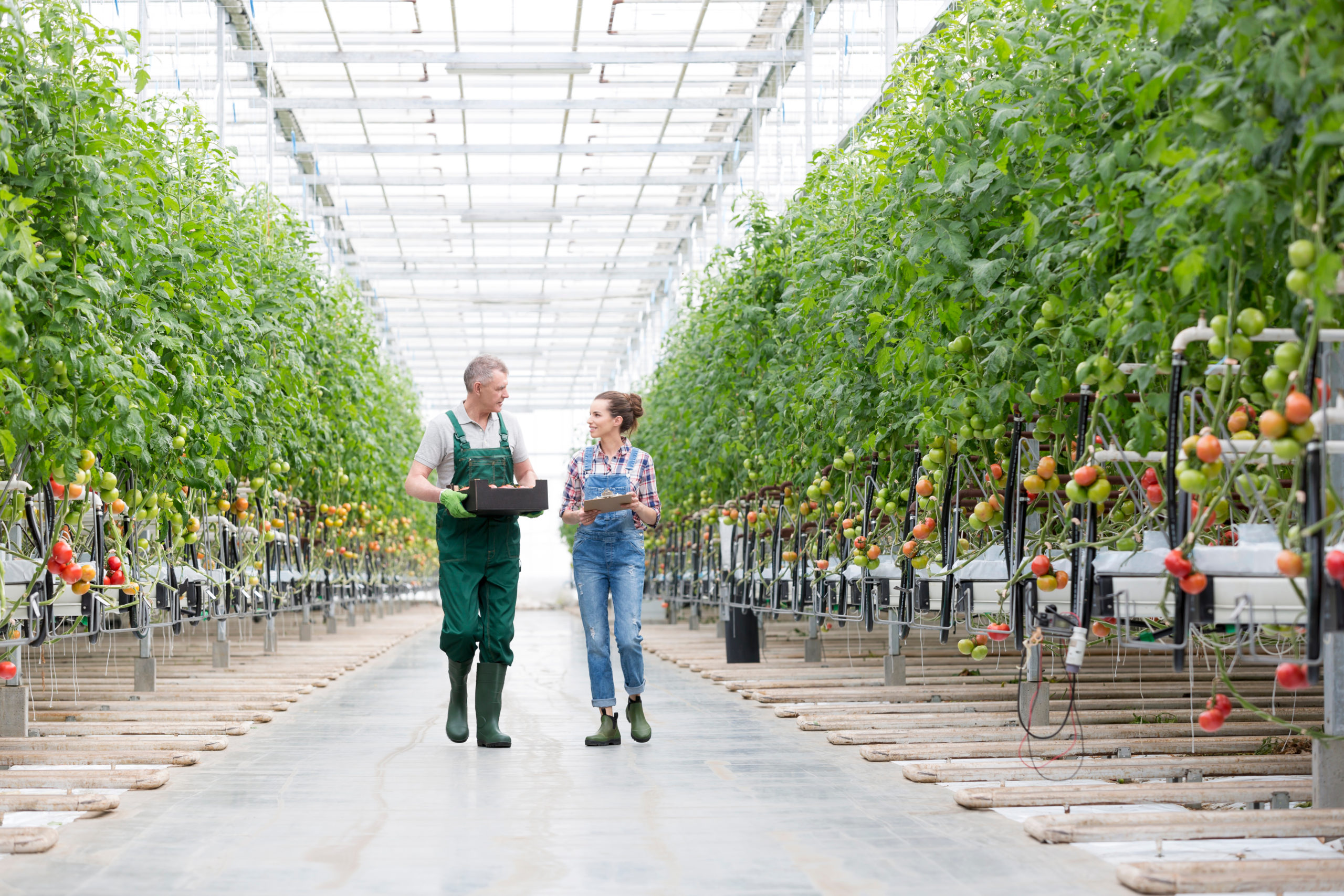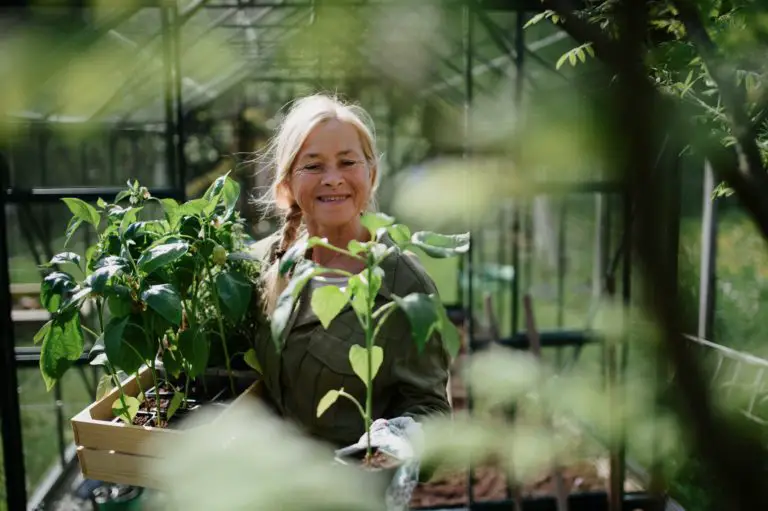Redefining Sustainable Living: Family Builds Home Within a Greenhouse to Stay Warm
Most houses use heating units to stay warm through the winter. However, this home is built within a greenhouse, creating a bubble of summer in Stockholm, Sweden. The residents of this environmentally-friendly abode are Marie Granmar, Charles Sacilotto, and their young son. The 4-millimeter surrounding glass cost about $84,000 to install.

This innovative idea was inspired by Swedish eco-architect Bengt Warne, who designed the first house within a greenhouse in 1974. With a glass structure surrounding their home, the residents can enjoy natural sunlight during the day, which warms the home, and the residual heat is stored in the bedrock below. Let’s delve into the fascinating concept of living in a greenhouse and explore the benefits it offers.
A Balance Between Nature and Comfort
Living in a greenhouse may sound idyllic, but it poses challenges in extreme weather conditions. During exceptionally cold winters, the house can become chilly. To ensure comfort, the inhabitants have incorporated traditional insulation and heating units, although they are used minimally compared to regular homes. This balance between harnessing the natural heating aspect of the greenhouse and utilizing supplementary heating measures contributes to the overall energy efficiency of their home.
“At the end of January it can be -2 degrees Celsius [28 F] outside and it can be 15 to 20 degrees Celsius [59 to 68 F] upstairs,”
Apart from its thermal advantages, this unique dwelling is also designed to be self-sufficient. The family collects rainwater for their household needs and watering their plants, reducing their reliance on water from external sources. Furthermore, they practice sustainable waste management by composting their kitchen and garden waste, creating fertile soil for their plants. The home’s sewage system, ingeniously built by self-taught engineer Charles Sacilotto, incorporates a urine-separating toilet and a series of processes such as centrifuges, cisterns, grow beds, and garden ponds to filter water and compost the remains.
Greenhouses: Nurturing Plants and Advancing Sustainability
Greenhouses are enclosed structures designed to cultivate and nurture plants, offering an environment where temperature, humidity, and light can be carefully controlled. These structures have played a pivotal role in agriculture, horticulture, and scientific research for centuries. The importance of greenhouses transcends mere plant protection; they serve as powerful tools for advancing sustainable agriculture, mitigating the effects of climate change, and ensuring food security for a growing global population.
One of the primary benefits of greenhouses is their ability to extend the growing season and create a stable environment for plants. By regulating temperature and shielding crops from harsh weather conditions, greenhouses enable year-round cultivation, ensuring a consistent and reliable supply of fresh produce. This is particularly crucial in regions with extreme climates, where seasonal limitations can significantly impact food production. Greenhouses also play a vital role in protecting plants from pests and diseases, reducing the need for chemical interventions and promoting healthier, more sustainable farming practices.

In an era marked by climate change and the depletion of natural resources, greenhouses take on added significance. They allow for the cultivation of crops in areas where traditional farming methods might be less viable due to changing weather patterns or resource constraints. Moreover, greenhouses offer a controlled setting for experimenting with crop varieties, optimizing growth conditions, and developing new farming techniques that can enhance agricultural productivity and resilience. By reducing the reliance on conventional open-field agriculture and promoting resource-efficient practices, greenhouses contribute to the overall sustainability of food production. In this way, they serve as a cornerstone of sustainable agriculture, helping to address the pressing challenges of food security and environmental conservation.
Safety and Durability of Living in a Glass Greenhouse
“It’s security glass, so in principle, this can’t break. If it ever does, it will break into tiny pieces to not harm anyone.”
Living in a glass greenhouse might raise concerns about safety and durability. However, the family ensured their peace of mind by using security glass for the construction. This type of glass is designed to break into small, harmless pieces if shattered, ensuring the safety of the occupants. The integrity of the structure remains intact, ensuring a durable and long-lasting home.
This innovative concept of living in a greenhouse offers an environmentally friendly, self-sufficient, and comfortable lifestyle. While it may not be a mainstream housing option, it serves as a striking example of sustainable living.
Similar Constructions Around the World
The Stockholm greenhouse home is not the only one of its kind. There are other notable examples of homes built within greenhouses that exemplify the fusion of modern living and nature.
In Rhode Island, Amy and Rob MacMillan repurposed an old greenhouse into an eco-friendly home. By capitalizing on the greenhouse’s features, such as ample natural light and passive solar energy, they were able to minimize their heating costs. Their kitchen, with its bright living area and A-frame slanted roof, pays homage to the greenhouse aesthetic.
Camouflage House 3, designed by Tokyo-based architect Hiroshi Iguchi, is another exemplary glass greenhouse home. Located in Nagano, Japan, this sustainable dwelling blends seamlessly with its lush surroundings. The house not only offers stunning views of the surrounding wildlife but also helps sustain plant life. With its indoor rock garden, living area, seating, and kitchen, it successfully merges indoor living with the outdoors. The white canvas incorporated into the design controls the temperature and adds a touch of softness to the industrial aesthetic.
Living in a greenhouse presents a unique and innovative way to stay warm while embracing a sustainable lifestyle. By integrating modern design principles, renewable energy sources, and self-sufficiency measures, families like the Granmar-Sacilotto household in Stockholm are challenging conventional norms and demonstrating that living in harmony with nature is possible. As we continue to explore alternative living solutions, architectural concepts like these provide inspiration for a greener and more sustainable future.
The Benefits of Choosing a Greenhouse for Your Gardening Needs
Choosing a greenhouse for your gardening needs can be a wise and rewarding decision for a variety of reasons. Greenhouses offer numerous benefits that can enhance your gardening experience and yield remarkable results. Here are some compelling reasons why you should consider choosing a greenhouse:
- Extended Growing Season: Greenhouses provide a controlled environment, allowing you to extend your growing season significantly. With the ability to regulate temperature, humidity, and light, you can start your plants earlier in the spring and continue growing well into the fall or even winter. This means you can enjoy fresh produce or vibrant flowers year-round, providing a valuable source of homegrown sustenance and beauty.
- Protection from Harsh Weather: Greenhouses shield your plants from the unpredictable and often adverse effects of weather, such as frost, hail, heavy rains, or excessive heat. By maintaining a stable climate, your plants are less susceptible to diseases and pests, resulting in healthier and more robust growth.
- Optimal Growth Conditions: The ability to control environmental factors like temperature, humidity, and light intensity allows you to create the perfect conditions for your plants. This level of precision enables you to grow a wider variety of crops, including those that might not thrive in your local climate. You can also experiment with rare or exotic species that require specific care.
- Increased Crop Yield: Greenhouses optimize plant growth, leading to increased crop yields. You can grow more plants in a smaller space and achieve faster growth rates. This efficiency not only saves you money on grocery bills but can also lead to surplus produce that you can share with friends and family or even sell at local markets.
- Environmental Benefits: Greenhouses are more environmentally friendly than conventional open-field farming. They require less water due to reduced evaporation, use fewer pesticides because of controlled conditions, and reduce the need for land and other resources. Additionally, the ability to grow your food at home reduces the carbon footprint associated with transportation.
- Customization and Versatility: Greenhouses come in various sizes and designs, allowing you to choose one that suits your gardening needs and available space. From small, portable structures to large, permanent installations, there’s a greenhouse for every gardener. You can also adapt the interior layout to accommodate different plant types and growing methods, making it a versatile investment.
Sources:
- Couple Builds Greenhouse Around Home to Grow Food and Keep Warm – EcoWatch
- Greenhouse Built Around A Home Is A Brilliant Way To Beat The Winter Blues – HuffPost
- Swedish family envelops home in greenhouse to warm up Stockholm weather – Design Boom
- 5 greenhouses that are actually homes – CBS News

This Site Was Inspired By An Interest in Protecting the Environment:
We had the privilege and joy of learning from Dr. Charlie Stine who instilled a love for the natural world through incredible field trips with the Johns Hopkins Odyssey Certificate program in Environmental Studies. At the time, the program was endorsed by the Maryland Department of Natural Resources. Sadly, after Dr. Stine retired, the program was phased out. We hope that we honor his legacy by shining a bright light on environmental issues and sharing good news about the success of various conservation programs when possible.


